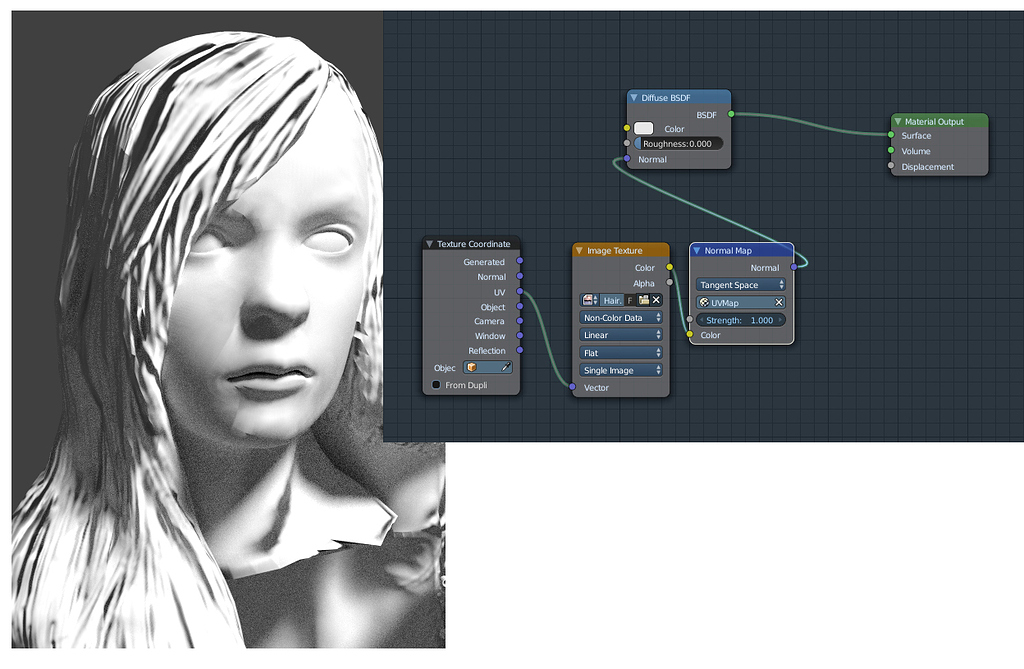

I made a color correction and added the cigarette smoke. For those lights I applied temperature using BlackBody Node looking for the best option that matches the result I had in mind.įor the final render, I used Cycles Render using 1000 samples, 300% of resolution, Adaptive Sampling, and rendered separate layers for each object group with the transparent option checked on the Render Properties, then I composed everything in Photoshop. It’s important to spend as much time as you need to create a good group of textures, always following your references.įirst I created a HDRI node connection for the general atmosphere, and then I added the Key light, Fill light, and a Rim light focusing the character. The first step is baking the textures and checking 4096 for the resolution according to the tileset. Be sure to use PBR - Metallic Roughness template and OpenGL when you import the mesh. This project was divided into three parts for the texturing process: The Girl, the spaceship, and the rest of assets, to avoid any lag (it also depends on your graphic card) and to raise the performance. I decided to work with UDIMs to have a higher and better quality in the final render with 4K tilesets.

Step 8: UDIMs & Textures with Substance Painter Next, in the UV Toolkit Panel I use the Texel Density Property to apply the same density to three different groups of meshes. Before starting to unwrap the meshes I recommend applying the Checker Map (you can find it in the top of UV Editor) to be sure that UVs are correct and have the same orientation for the textures.

Just like the previous step I used Maya to create UVs.
#Zbrush to blender manual#
In this case I did the manual retopology only for the Girl character.
#Zbrush to blender software#
My principal 3D software for modeling is Blender but in this particular part of the process I chose Maya because I feel more comfortable with the Modeling Toolkit Panel, it has excellent tools like “Quad Draw” that allows us to be more efficient, and so far it’s the easiest way I know to do it. For this project I decided to use Blender’s particle system which has several options where you can adjust the size, the length, radious, the kink type, and other properties. I reviewed a lot of references from incredible 3D artists to understand how the hair works and how they made it. One of the challenges for me in this scene was the hair. In this step I would recommend always starting with a consistent silhouette, basic shapes, and making sure your proportions are correct before you start on the details. I invested some time creating a clean topology and good loops because those could affect how the geometry looks, and will also facilitate your work later when starting with the Unwrap Process. In this case references like the gun, the spaceship, and the hair shape are very important.įor this project I modeled the objects in Blender except for the Girl character which I did in ZBrush.
#Zbrush to blender how to#
It helps to give more clarity about how to adapt the concept to a credible and realistic scene.

I Search for an object and characters that could help me with the shape, materials, and textures. Also in the camera options you have to adjust the focal length and the depth of field according to the concept. This part is very important because you need to organize volumes and place the objects in order to have the essence of the scene. I knew his work a while ago and I just loved the storytelling on his images, the lighting is amazing, and the way he composes the images generates a deep connection with the viewer.įirst in Blender, move the camera and set up the concept as a background image, adjust the resolution if necessary and then with basic shapes (using mainly primitives) start the block out. The Image is based on a concept by the great Samuel Smith, who is an Illustrator and Visual Development Artist.


 0 kommentar(er)
0 kommentar(er)
